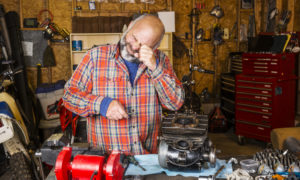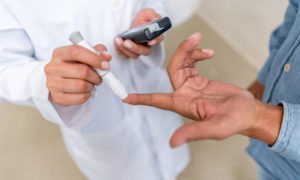 More than half of consumers who had eye exams last year from January to June 2012 at eyecare provider offices, including independent ODs, were not asked, or cannot remember, if they were asked about their occupation, according to Jobson Optical Research’s 2012 Adult Consumer Eye Exam Experience. Some 47.4 percent say they were asked about their occupation while 43 percent say they were not, and 9.6 percent say they can’t remember.
More than half of consumers who had eye exams last year from January to June 2012 at eyecare provider offices, including independent ODs, were not asked, or cannot remember, if they were asked about their occupation, according to Jobson Optical Research’s 2012 Adult Consumer Eye Exam Experience. Some 47.4 percent say they were asked about their occupation while 43 percent say they were not, and 9.6 percent say they can’t remember.
There are three different histories needed for every patient: a demographic history, a medical history and a lifestyle history. Of the three, even though the lifestyle history is the one history we should emphasize, it is often the one history that gets dropped when time is short. Because the lifestyle history often has the greatest impact on the case design and case presentation, let’s take today to rethink our approach to this valuable document by examining these four areas: content, distribution, review and case presentation.
CONTENT
There are two major purposes for the lifestyle history, (1) to get the patient to think about problem areas that need to be addressed and (2) to give us knowledge about how we can help improve the patient’s quality of life at home, school, work and play. To maximize the impact of this document, we need to strategically ask questions probing the patient’s lifestyle.
There are helpful questions that need to be asked such as:
1. What is your occupation?
2. Are you thinking about a new pair of dress glasses today?
3. Are you considering sunglasses to make your outdoor performance better and more comfortable?
4. Are you thinking about contact lenses?
5. Would you like to go without glasses or contact lenses?
6. Would you like to go without glasses or contact lenses during waking hours without needing surgery to get there?
7. How many screens do you use during the course of a day (e.g.: cell phone, tablet, computer)?
8. How long do you spend looking at your screens during the course of a day?
9. Are there times during the day when your eyes feel dry and uncomfortable?
10. Do you ever take your contact lenses out before the day is over?
Here are five examples of lifestyle histories that came up during a Google search. Look at these and see if they can help in designing or improving the content of your lifestyle history.
http://anaheimeyecare.net/forms/AnaheimEyeCare_Lifestyle.pdf
http://www.eyecaremadison.com/pdf/lifestyle-questionnaire-print.pdf
http://www.lippmaneyecare.com/pdf/questionarie.pdf
http://benefieldeyecare.com/wp-content/uploads/2012/05/Lifestyle-Questionnaire.pdf
http://www.portstjohneyecare.com/forms/LifestyleQuestionnaire.pdf
DISTRIBUTION
It does not matter if you have the patient fill out the lifestyle history online or in person when they get to the office. The key point is to make sure it gets done.
REVIEW
It’s a good idea to have the staff member who picks the patient up in reception make sure the lifestyle history is done. If it is not, then get it done as part of the pre-test sequence. The doctor should review this document in front of the patient. This sets up the examination that results in a case design and presentation that meets all of the patient’s needs.
CASE PRESENTATION
A valuable approach to case design and presentation is to make sure you reference everything back to the patient history. You cannot do this effectively if you did not ask lifestyle questions. So the key to an effective case design and presentation is an effective lifestyle history.
Your action plan today is to review your patient lifestyle history. If you don’t have one, then create one. If you have one, then see if you can improve it to make sure you are maximizing the patient’s quality of life at home, school, work and play.
To purchase Jobson Optical Research’s 2012 Adult Consumer Eye Exam Experience, visit: www.jobsonresearch.com/insight_eyeexam

























